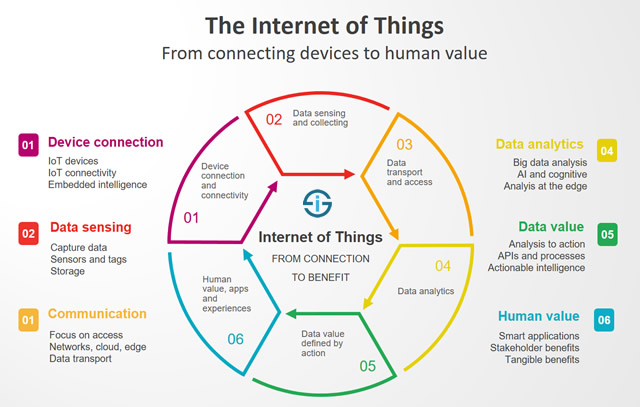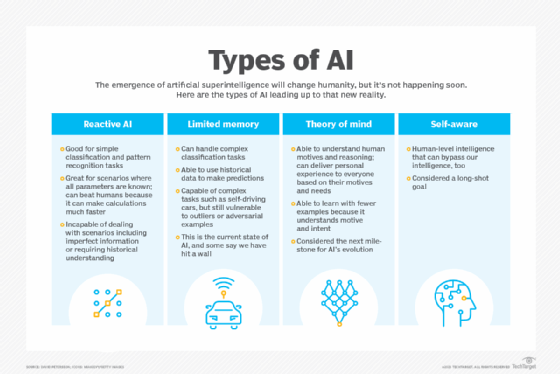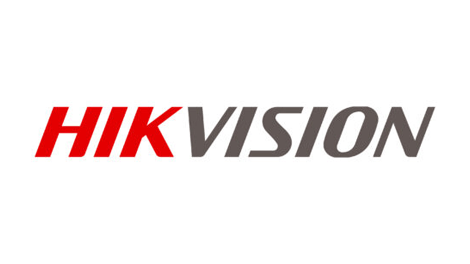Hikvision – Hikvision releases annual ESG report 2022
 Hikvision has released its 2022 Environmental, Social and Governance (ESG) Report, showcasing the company’s commitment to responsible business practices and its ongoing efforts to create social value.
Hikvision has released its 2022 Environmental, Social and Governance (ESG) Report, showcasing the company’s commitment to responsible business practices and its ongoing efforts to create social value.
The report highlights the significant progress made by Hikvision in various areas of ESG, including integrity and compliance, low-carbon development, and fostering harmonious relationships with employees, partners, and communities.
“At Hikvision, we are committed to upholding social responsibility, ethics, and environmental protection in our operations. We continuously assess and adjust our operations to ensure that we are doing the right thing and doing things right. Our dedicated engineers strive to develop technologies that enhance public safety, traffic management, and operational efficiency. These endeavors underscore our strong commitment to the ESG missions,” said Huang Fanghong, Chief Compliance Officer and Senior Vice President of Hikvision.
Tech for a better world
Recognizing the transformative potential of technology to create a better world, Hikvision harnesses its advanced AIoT capabilities to drive positive change and make a significant impact across various industries, significantly improving people’s lives.
The 2022 Hikvision ESG report outlines key categories of social value created by the company. Through innovative solutions and products, Hikvision provides support to vulnerable groups, and boosts the digital transformation of urban and rural governance, transportation management, and community services. The company has also expanded its technological capabilities to foster the harmonious co-existence of humans and nature.
Social responsibility and sustainable development are now deeply ingrained in Hikvision’s business practices. Through collaborations with like-minded individuals and industry partners, Hikvision strives to unleash the full potential of technology to change the world for the better.

Low-carbon operations and green development
Hikvision has integrated green and low-carbon development into its ESG management framework. In 2022, the company completed its Carbon Neutrality Blueprint and received the ISO14064 certification for Greenhouse Gas Accounting and Verification. This esteemed certification focuses on quantifying and verifying greenhouse gas emissions, providing organizations a robust framework to develop greenhouse gas inventories and policymakers to create effective climate change initiatives.
The company continuously improves its environmental management system, promotes green manufacturing and operations, and implements measures for energy conservation and emission reduction. Last year, Hikvision purchased 32,852 MWh of green electricity and 4,508 MWh of power generated via photovoltaic units.
Investing significantly in the development of innovative technologies and products, Hikvision empowers and helps everyone – from customers to partners – working together towards a greener future. Meanwhile, the company remains committed to reducing its footprint at every stage of product development and business operations – from materials and design choices to green manufacturing and low-carbon office park practices.
Further enhancing compliance ecosystem
Hikvision continues to enhance its compliance system to encompass a wide range of issues and activities. The company has invited experts in international policy and relations, corporate governance, cybersecurity, data protection, and human rights governance to provide the management team with professional insights and advice. Furthermore, the company strives to raise employees’ compliance awareness and encourages adherence to its compliance practices.
Since 2022, Hikvision has hosted Global ESG Conferences that are designed to discuss key ESG topics and priorities, providing a forum for stakeholders to gain deeper insight into the international landscape in which the company operates and the global responsibilities that Hikvision is committed to fulfilling. These conferences have been held across various countries and regions, serving as a platform for employees and partners to work together for social wellbeing.
For more information, you can explore the 2022 Hikvision ESG Report.
Source
Hikvision
EMR Analysis
More information on HikVision: https://www.hikvision.com/en/ + Hikvision is a world-leading IoT solution provider with video as its core competency. Featuring an extensive and highly skilled R&D workforce, Hikvision manufactures a full suite of comprehensive products and solutions for a broad range of vertical markets. In addition to the security industry, Hikvision extends its reach to smart home tech, industrial automation, and automotive electronics industries to achieve its long-term vision. Hikvision products also provide powerful business intelligence for end users, which can enable more efficient operations and greater commercial success.
Hikvision is an IoT solution provider with video as its core competency.
Hikvision now has more than 42,000 employees, over 20,000 of which are R&D engineers. The company annually invests over 10% of its annual sales revenue to research and development for continued product innovation. Hikvision has established a complete, multi-level R&D system that includes every operation from research to design, development, testing, technical support, and service. Centered at its Hangzhou headquarters, the R&D teams operate globally, including R&D centers in UK, Canada and Asia-Pacific region, as well as eight cities in China.
More information on Hu Yangzhong (President & CEO, Hikvision): See the full profile on EMR Executive Services
More information on Huang Fanghong (Senior Deputy General Manager and Board Secretary + Chief Compliance Officer, Hikvision): See the full profile on EMR Executive services
More information on ISO: http://www.iso.org/ + ISO (International Organization for Standardization) is the world’s largest developer of International Standards. Through our members and their stakeholders, we bring people together to create International Standards that respond to global challenges. ISO standards support global trade, drive inclusive and equitable economic growth, advance innovation and promote health and safety to achieve a sustainable future. Follow us to learn more about standards and how you can participate to making lives easier, safer, and better.
More information on the ISO14064 certification: https://www.iso.org/standard/66453.html + Greenhouse gases — Part 1: Specification with guidance at the organization level for quantification and reporting of greenhouse gas emissions and removals. This document specifies principles and requirements at the organization level for the quantification and reporting of greenhouse gas (GHG) emissions and removals. It includes requirements for the design, development, management, reporting and verification of an organization’s GHG inventory.
The ISO 14064 series is GHG programme neutral. If a GHG programme is applicable, requirements of that GHG programme are additional to the requirements of the ISO 14064 series.
EMR Additional Notes:
- ESG (Environmental, Social and Governance):
- Refers to the three key factors when measuring the sustainability and ethical impact of an investment in a business or company. Most socially responsible investors check companies out using ESG criteria to screen investments.
- ESG metrics are not commonly part of mandatory financial reporting, though companies are increasingly making disclosures in their annual report or in a standalone sustainability report.
- There is not a standardized approach to the calculation or presentation of different ESG metrics.
- Environmental: Conservation of the natural world
- Climate change and carbon emissions
- Air and water pollution
- Biodiversity
- Deforestation
- Energy efficiency
- Waste management
- Water scarcity
- …
- Social: Consideration of people & relationships
- Customer satisfaction
- Data protection and privacy
- Gender and diversity
- Employee engagement
- Community relations
- Human rights
- Labor standards
- …
- Governance: Standards for running a company
- Board composition
- Audit committee structure
- Bribery and corruption
- Executive compensation
- Lobbying
- Political contributions
- Whistleblower schemes
- …
- Environmental: Conservation of the natural world
- Criteria are of increasing interest to companies, their investors and other stakeholders. With growing concern about he ethical status of quoted companies, these standards are the central factors that measure the ethical impact and sustainability of investment in a company.
- Consequently, ESG analysis considers how companies serve society and how this impacts their current and future performance.
- CSR (Corporate Social Responsability):
- Framework or business model that helps a company be socially accountable to itself, its stakeholders, and the public.
- The purpose of CSR is to give back to the community, take part in philanthropic causes, and provide positive social value. Businesses are increasingly turning to CSR to make a difference and build a positive brand around their company.
- CSR tends to target opinion formers – politicians, pressure groups, media. Sustainability targets the whole value chain – from suppliers to operations to partners to end-consumers.
- CSR vs. ESG:
- CSR is a company’s framework of sustainability plans and responsible cultural influence, whereas ESG is the assessable outcome concerning a company’s overall sustainability performance.
- The major difference between them is that CSR is a business model used by individual companies, but ESG is a criteria that investors use to assess a company and determine if they are worth investing in.
- Carbon Dioxide (CO2):
- Primary greenhouse gas emitted through human activities. Carbon dioxide enters the atmosphere through burning fossil fuels (coal, natural gas, and oil), solid waste, trees and other biological materials, and also as a result of certain chemical reactions (e.g., manufacture of cement). Carbon dioxide is removed from the atmosphere (or “sequestered”) when it is absorbed by plants as part of the biological carbon cycle.
- Decarbonization:
- Reduction of carbon dioxide emissions through the use of low carbon power sources, achieving a lower output of greenhouse gasses into the atmosphere.
- IOT (The Internet Of Things):
- The Internet of Things (IoT) refers to a system of interrelated, internet-connected objects that are able to collect and transfer data over a wireless network without human intervention.
- Describes the network of physical objects—“things”—that are embedded with sensors, software, and other technologies for the purpose of connecting and exchanging data with other devices and systems over the internet.
- The Most Popular IoT Devices are:
- Smart watches are the most popular IoT devices. …
- Gaming consoles. …
- Smart TV sets and content streaming devices. …
- Voice control devices. …
- Printers. …
- Cameras. …
- Lighting appliances. …
- Smart thermostats.


- Industrial IoT Solutions:
- Industrial IoT (IIoT) involves collecting and analyzing sensor-generated data to support equipment monitoring and maintenance, production process analytics and control, and more. In manufacturing IT since 1989, ScienceSoft offers IIoT consulting and development to create secure IIoT solutions.
- AI – Artificial Intelligence:
- https://searchenterpriseai.techtarget.com/definition/AI-Artificial-Intelligence +
- Artificial intelligence is the simulation of human intelligence processes by machines, especially computer systems. Specific applications of AI include expert systems, natural language processing, speech recognition and machine vision.
- As the hype around AI has accelerated, vendors have been scrambling to promote how their products and services use AI. Often what they refer to as AI is simply one component of AI, such as machine learning. AI requires a foundation of specialized hardware and software for writing and training machine learning algorithms. No one programming language is synonymous with AI, but a few, including Python, R and Java, are popular.
- In general, AI systems work by ingesting large amounts of labeled training data, analyzing the data for correlations and patterns, and using these patterns to make predictions about future states. In this way, a chatbot that is fed examples of text chats can learn to produce lifelike exchanges with people, or an image recognition tool can learn to identify and describe objects in images by reviewing millions of examples.
- AI programming focuses on three cognitive skills: learning, reasoning and self-correction.
- What are the 4 types of artificial intelligence?
- Type 1: Reactive machines. These AI systems have no memory and are task specific. An example is Deep Blue, the IBM chess program that beat Garry Kasparov in the 1990s. Deep Blue can identify pieces on the chessboard and make predictions, but because it has no memory, it cannot use past experiences to inform future ones.
- Type 2: Limited memory. These AI systems have memory, so they can use past experiences to inform future decisions. Some of the decision-making functions in self-driving cars are designed this way.
- Type 3: Theory of mind. Theory of mind is a psychology term. When applied to AI, it means that the system would have the social intelligence to understand emotions. This type of AI will be able to infer human intentions and predict behavior, a necessary skill for AI systems to become integral members of human teams.
- Type 4: Self-awareness. In this category, AI systems have a sense of self, which gives them consciousness. Machines with self-awareness understand their own current state. This type of AI does not yet exist.
- https://searchenterpriseai.techtarget.com/definition/AI-Artificial-Intelligence +

- AIoT (Artificial Intelligence of Things):
- Relatively new term and has recently become a hot topic which combines two of the hottest acronyms, AI (Artificial Intelligence) and IoT (Internet of Things).
- AIoT is transformational and reciprocally beneficial for both types of technology, as AI adds value to IoT through machine learning capabilities and improved decision-making processes, while IoT adds value to AI through connectivity, signalling, and data exchange.
- Aim: achieve more efficient IoT operations, improve human-machine interactions and enhance data management and analytics.
- Global Warming: Global warming is the long-term heating of Earth’s climate system observed since the pre-industrial period (between 1850 and 1900) due to human activities, primarily fossil fuel burning, which increases heat-trapping greenhouse gas levels in Earth’s atmosphere.
- Global Warming potential (GWP):
- The heat absorbed by any greenhouse gas in the atmosphere, as a multiple of the heat that would be absorbed by the same mass of carbon dioxide(CO2). GWP is 1 for CO2. For other gases it depends on the gas and the time frame.
- Carbon dioxide equivalent (CO2e or CO2eq or CO2-e) is calculated from GWP. For any gas, it is the mass of CO2 which would warm the earth as much as the mass of that gas. Thus it provides a common scale for measuring the climate effects of different gases. It is calculated as GWP times mass of the other gas. For example, if a gas has GWP of 100, two tonnes of the gas have CO2e of 200 tonnes.
- GWP was developed to allow comparisons of the global warming impacts of different gases.
- Greenhouse Gas (GHG):
- A greenhouse gas is any gaseous compound in the atmosphere that is capable of absorbing infrared radiation, thereby trapping and holding heat in the atmosphere. By increasing the heat in the atmosphere, greenhouse gases are responsible for the greenhouse effect, which ultimately leads to global warming.
- The main gases responsible for the greenhouse effect include carbon dioxide, methane, nitrous oxide, and water vapor (which all occur naturally), and fluorinated gases (which are synthetic).

- Hydrofluorocarbons (HFC):
- Hydrofluorocarbons (HFCs) are a group of industrial chemicals primarily used for cooling and refrigeration. HFCs were developed to replace stratospheric ozone-depleting substances that are currently being phased out under the Montreal Protocol on Substances that Deplete the Ozone Layer.
- Many HFCs are very powerful greenhouse gases and a substantial number are short-lived climate pollutants with a lifetime of between 15 and 29 years in the atmosphere.
- Cybersecurity:
- Computer security, cybersecurity, or information technology security is the protection of computer systems and networks from information disclosure, theft of or damage to their hardware, software, or electronic data, as well as from the disruption or misdirection of the services they provide.
- Ransomware strike: Ransomware attacks work by gaining access to your computer or device, and then locking and encrypting the data stored on it. How does this happen? It often happens when victims mistakenly download malware through email attachments or links from unknown sources, which happen to be hackers.
- Data breach:
- A data breach is a security violation, in which sensitive, protected or confidential data is copied, transmitted, viewed, stolen or used by an individual unauthorized to do so. Other terms are unintentional information disclosure, data leak, information leakage, and data spill.
- Cyber Attack:
- Targeting an enterprise’s use of cyberspace for the purpose of disrupting, disabling, destroying, or maliciously controlling a computing environment/infrastructure; or destroying the integrity of the data or stealing controlled information.
- Penetration Testing:
- Penetration testing (or pen testing) is a security exercise where a cyber-security expert attempts to find and exploit vulnerabilities in a computer system. The purpose of this simulated attack is to identify any weak spots in a system’s defenses which attackers could take advantage of.
- Ransomware:
- Ransomware is a type of malware from cryptovirology that threatens to publish the victim’s personal data or permanently block access to it unless a ransom is paid off. While some simple ransomware may lock the system without damaging any files, more advanced malware uses a technique called cryptoviral extortion.
- A ransomware attack gains access to a victim’s device through infected emails, messages, and malicious sites and encrypts the data in that device. The ransomware uses simple asymmetric encryption algorithms, blocks a user’s files, and makes them difficult to decrypt without knowing the key.
- Ransomware is a type of malware (malicious software) used by cybercriminals. If a computer or network has been infected with ransomware, the ransomware blocksaccess to the system or encrypts its data.
- Cybercriminals demand ransom money from their victims in exchange for releasing the data.

